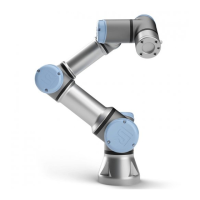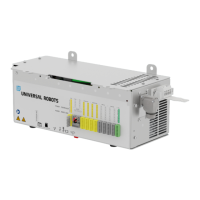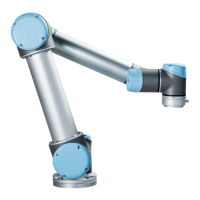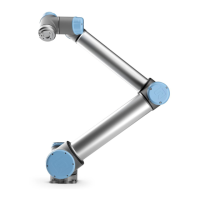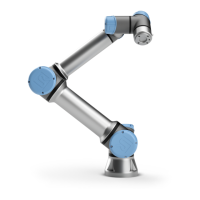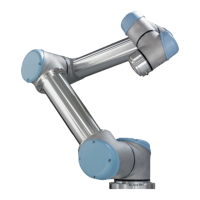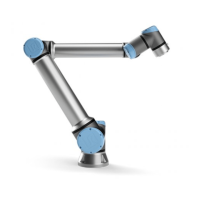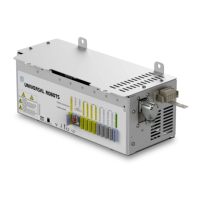10.5 Safety Checksum
10.5 Safety Checksum
The text in the top right corner of the screen gives a shorthand representation of the safety config-
uration currently used by the robot. When the text changes, this indicates that the current safety
configuration has changed as well. Clicking on the checksum displays the details about the cur-
rently active safety configuration.
10.6 Safety Modes
Under normal conditions (i.e. when no protective stop is in effect), the safety system operates in
one of the following safety modes, each with an associated set of safety limits:
Normal mode: The safety mode that is active by default;
Reduced mode: Active when the robot TCP is positioned beyond a Trigger Reduced mode plane (see 10.12),
or when triggered using a configurable input (see 10.13).
Recovery mode: When the robot arm is in violation of one of the other modes (i.e. Normal or Reduced
mode) and a Stop Category 0 has occurred,
1
the robot arm will start up in Recovery mode. This
mode allows the robot to move slowly back to the allowed area using MoveTab or Freedrive.
It is not possible to run programs for the robot in this mode.
WARNING:
Note that limits for joint position, TCP position and TCP orientation are
disabled in Recovery mode, so take caution when moving the robot
arm back within the limits.
The subtabs of the Safety Configuration screen enable the user to define separate sets of safety
limits for Normal and Reduced mode. For the tool and joints, Reduced mode limits regarding speed
and momentum are required to be more restrictive than their Normal mode counterparts.
When a safety limit from the active limit set is violated, the robot arm performs a Stop Category
0. If an active safety limit, such as a joint position limit or a safety boundary, is violated already
when the robot arm is powered on, it starts up in Recovery mode. This makes it possible to move
the robot arm back within the safety limits. While in Recovery mode, the movement of the robot
arm is limited by a fixed limit set that is not customizable by the user. For details about Recovery
mode limits, see the Hardware Installation Manual.
10.7 Freedrive Mode
When in Freedrive mode (see 13.1.5) and the movement of the robot arm comes close to certain limits,
the user will feel a repelling force. This force is generated for limits on the position, orientation and
speed of the robot TCP and the position and speed of the joints.
The purpose of this repelling force is to inform the user that the current position or speed is close
to a limit and to prevent the robot from violating that limit. However, if enough force is applied
1
According to IEC 60204-1, see Glossary for more details.
Version 3.10
Copyright © 2009–2019 by Universal Robots A/S. All rights reserved.
II-7 CB3
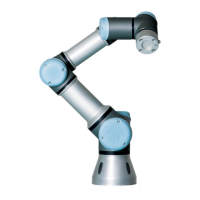
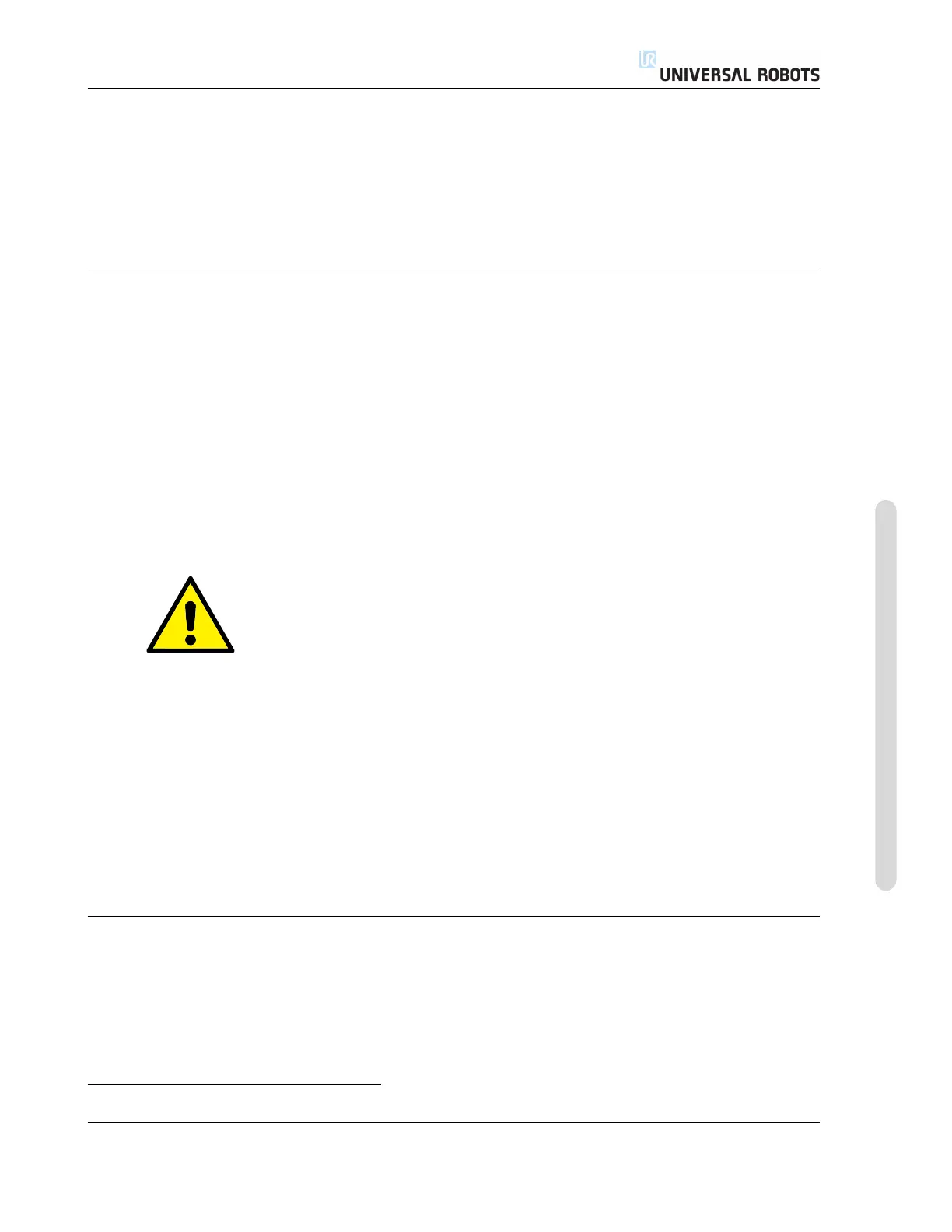